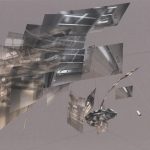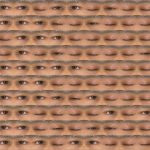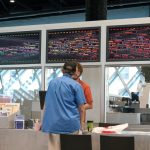George Legrady

Most Recent Affiliation:
- University of California, Santa Barbara, Media Arts & Technology, Director
Location:
- Santa Barbara, California, US
Website:
Bio:
George Legrady directs the Experimental Visualization Lab in the Media Arts & Technology graduate program at the University of California, Santa Barbara. His research and teaching are currently focused on data visualization funded by the Robert W Deutsch Foundation, swarm robotic multi-camera research funded by a National Science Foundation IIS award, and visual ethnography also funded by the National Science Foundation. His artwork in interactive, digital media explores the intersections between culture, narrative and emerging technologies with installations presented internationally in Asia, Europe and North America. His commission for the Seattle Public Library is one of the longest running dynamic data visualization artworks to collect and visualize data since 2005. “We Are Stardust” realized in collaborative with the NASA Spitzer Science Center at the California Institute of Technology was exhibited at the Art Center College of Design (2008), the Vancouver Winter Olympics (2010), and the ZKM in Karlsruhe, Germany (2015).
Art Works:
-

Swarm Vision
Categories: [Installation]
[SIGGRAPH 2013] -

The Ising Model: Blink and Polyptic
Categories: [Interactive & Monitor-Based]
[SIGGRAPH Asia 2018] -

Making Visible the Invisible
Categories: [Installation] [Interactive & Monitor-Based]
[ The Artworks of the 2019 Art Papers]
Writings and Presentations:
-
Title:
SwarmVision: Autonomous Aesthetic Multi-Camera Interaction
Writing Type: Paper
Author(s):
Exhibition: SIGGRAPH Asia 2013: Art Gallery
Abstract Summary:A platform of exploratory networked robotic cameras was created, informing new directions in computer vision engineering and utilizing an aesthetic approach to experimentation. Initiated by research in autonomous swarm robotic camera behavior, SwarmVision is an installation consisting of multiple Pan-TiltZoom cameras on rails positioned above spectators in an exhibition space, where each camera behaves autonomously based on its own rules of computer vision and control. Each of the cameras is programmed to detect visual information of interest based on a different algorithm, and each negotiates with the other two, influencing what subject matter to study in a collective way. The emergent behaviors of the system suggest potential new approaches in scene reconstruction, video-based behavior analysis and other areas of vision and imaging research.
[Download PDF]
Title: Making Visible the Invisible: A Data-Driven Media Artwork, in Continuous Operation for 14 Years
Writing Type: Paper
Author(s):
Exhibition: SIGGRAPH 2019: Proliferating Possibilities: Speculative Futures in Art and Design
Abstract Summary:Making Visible the Invisible is a six-screen, dynamic data visualization artwork at the Seattle Public Library. It visualizes patrons’ library checkouts received by the hour through four different animations to give a sense of community interests. The artwork was activated in September 2005 for a 10-year operation and was extended.
Role(s):




